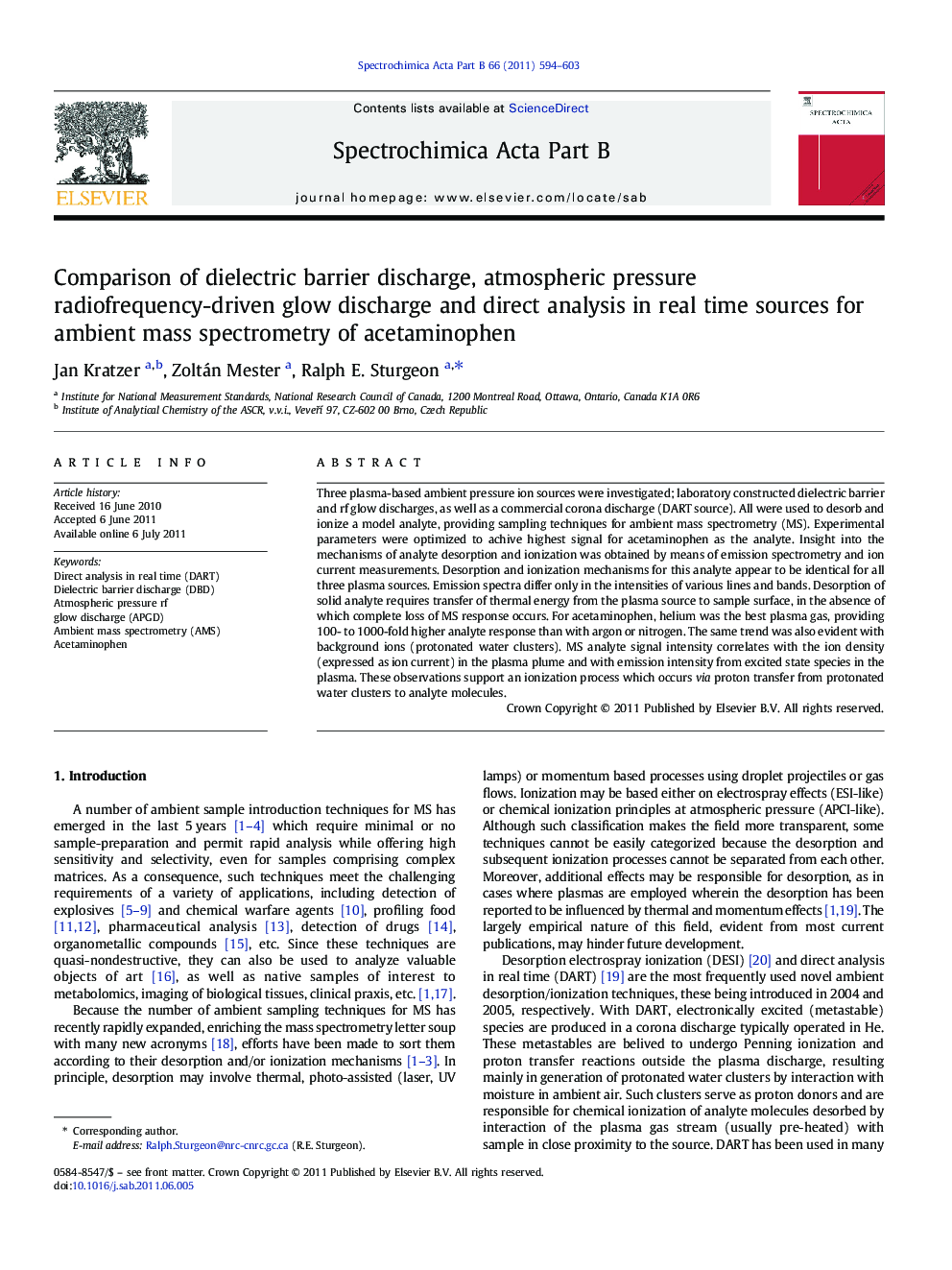| Article ID | Journal | Published Year | Pages | File Type |
|---|---|---|---|---|
| 1240199 | Spectrochimica Acta Part B: Atomic Spectroscopy | 2011 | 10 Pages |
Three plasma-based ambient pressure ion sources were investigated; laboratory constructed dielectric barrier and rf glow discharges, as well as a commercial corona discharge (DART source). All were used to desorb and ionize a model analyte, providing sampling techniques for ambient mass spectrometry (MS). Experimental parameters were optimized to achive highest signal for acetaminophen as the analyte. Insight into the mechanisms of analyte desorption and ionization was obtained by means of emission spectrometry and ion current measurements. Desorption and ionization mechanisms for this analyte appear to be identical for all three plasma sources. Emission spectra differ only in the intensities of various lines and bands. Desorption of solid analyte requires transfer of thermal energy from the plasma source to sample surface, in the absence of which complete loss of MS response occurs. For acetaminophen, helium was the best plasma gas, providing 100- to 1000-fold higher analyte response than with argon or nitrogen. The same trend was also evident with background ions (protonated water clusters). MS analyte signal intensity correlates with the ion density (expressed as ion current) in the plasma plume and with emission intensity from excited state species in the plasma. These observations support an ionization process which occurs via proton transfer from protonated water clusters to analyte molecules.
